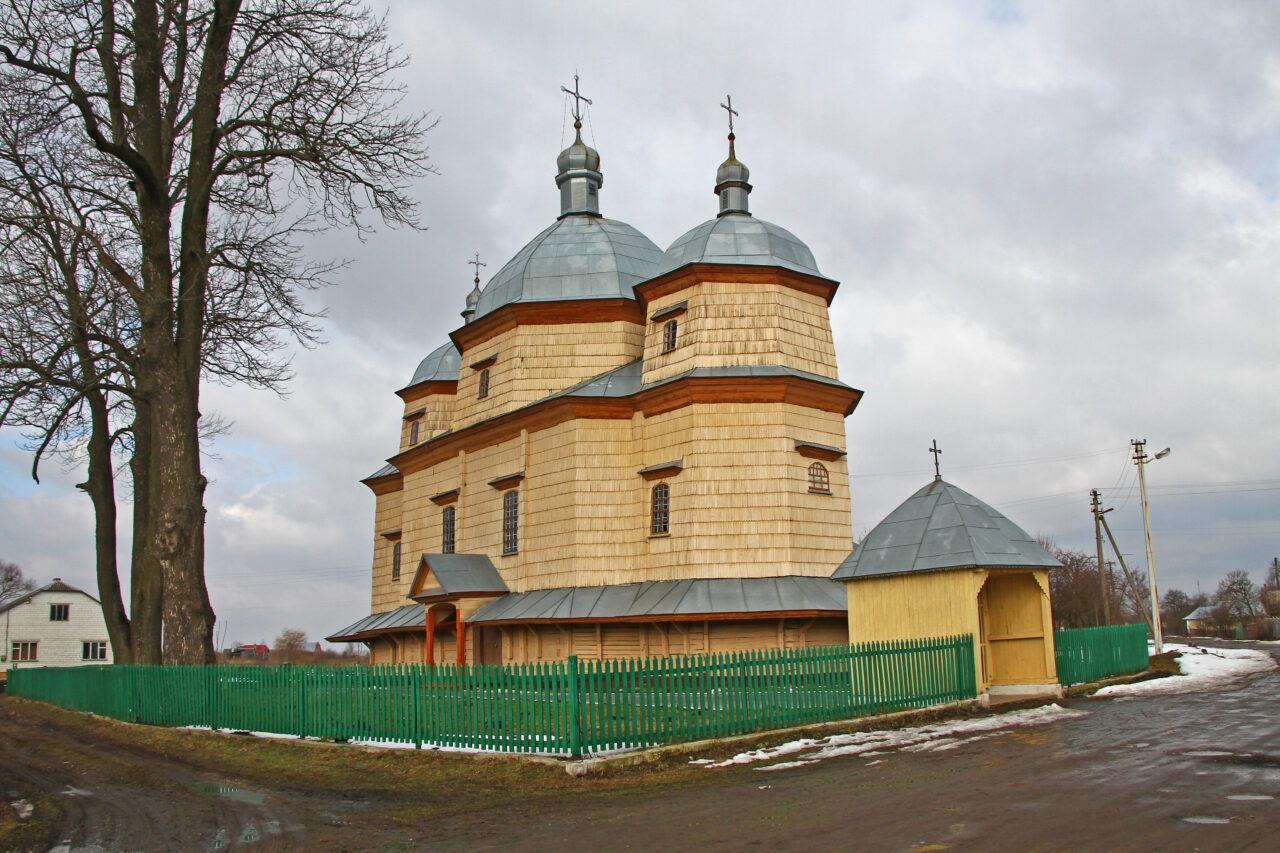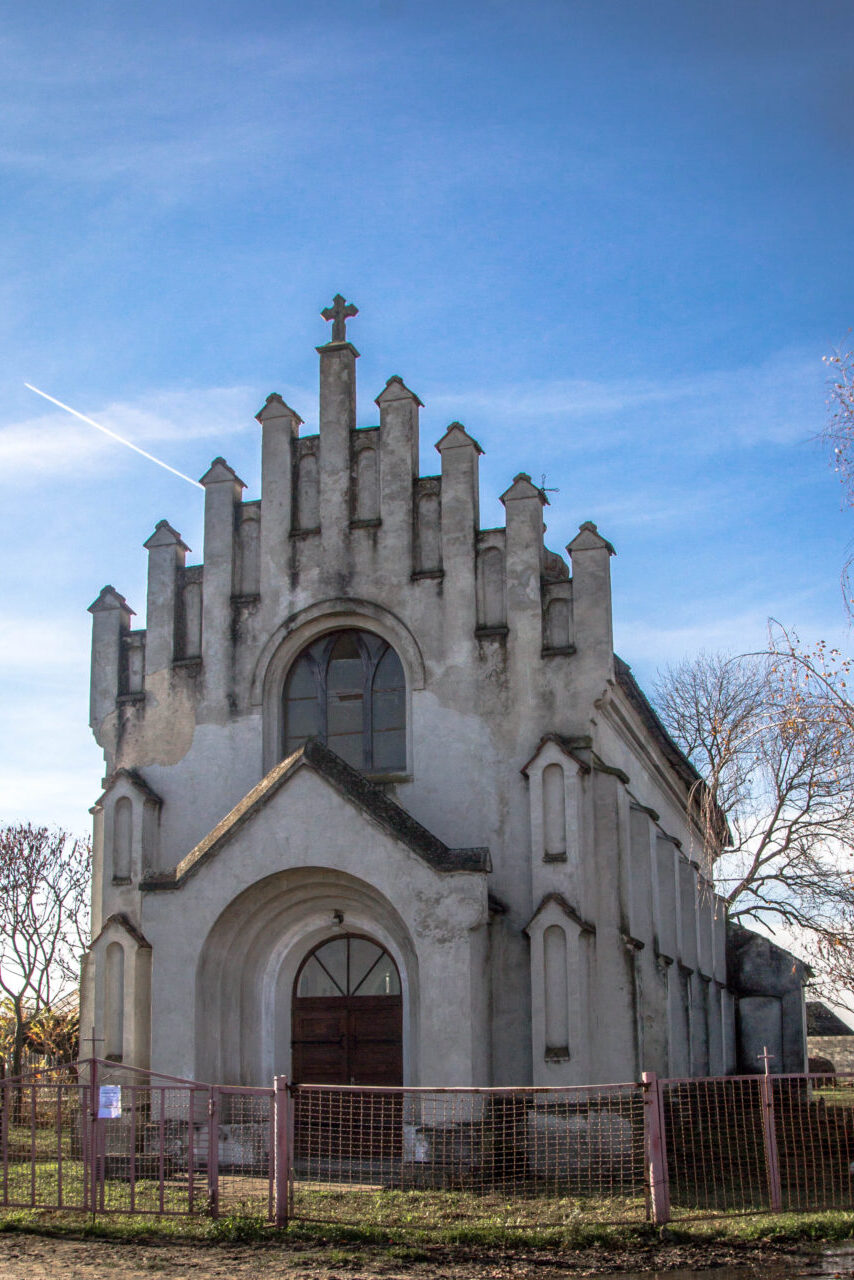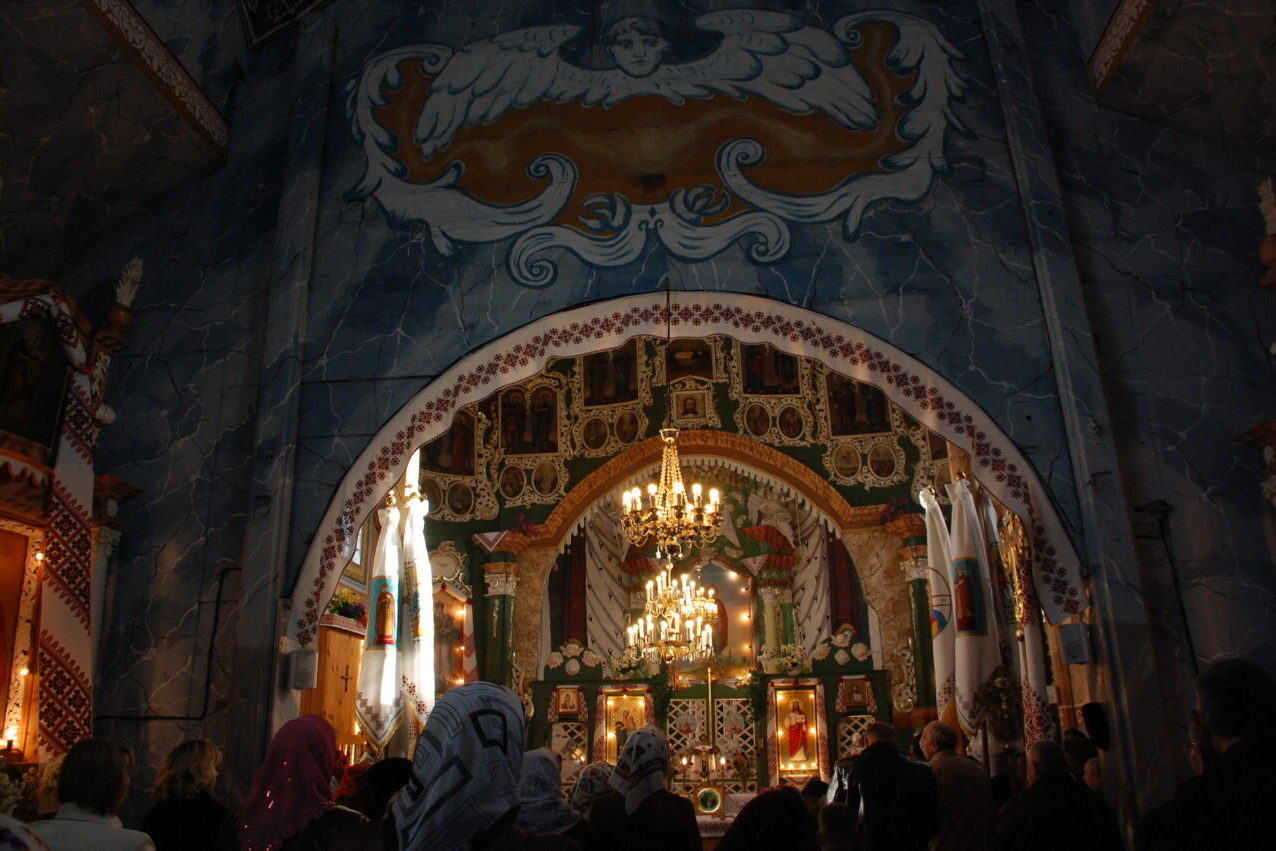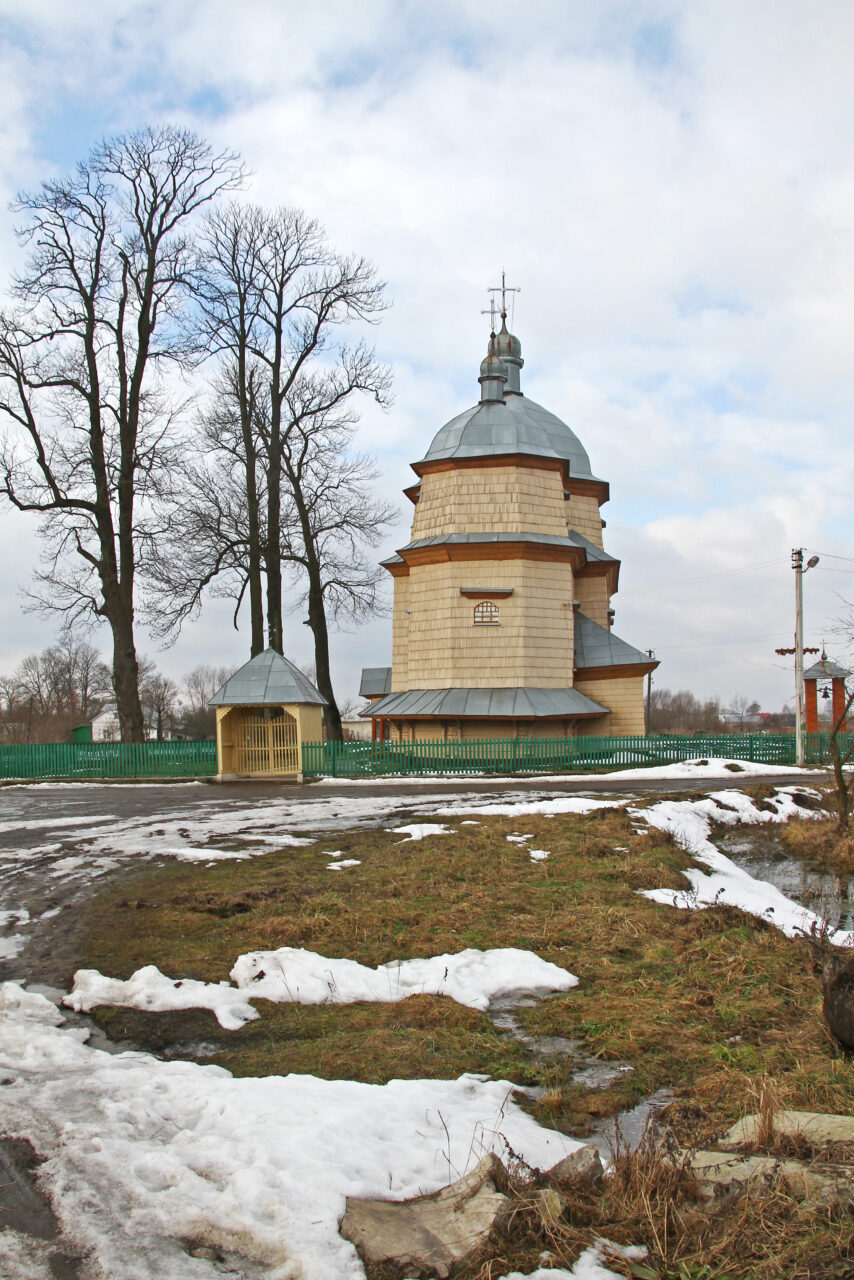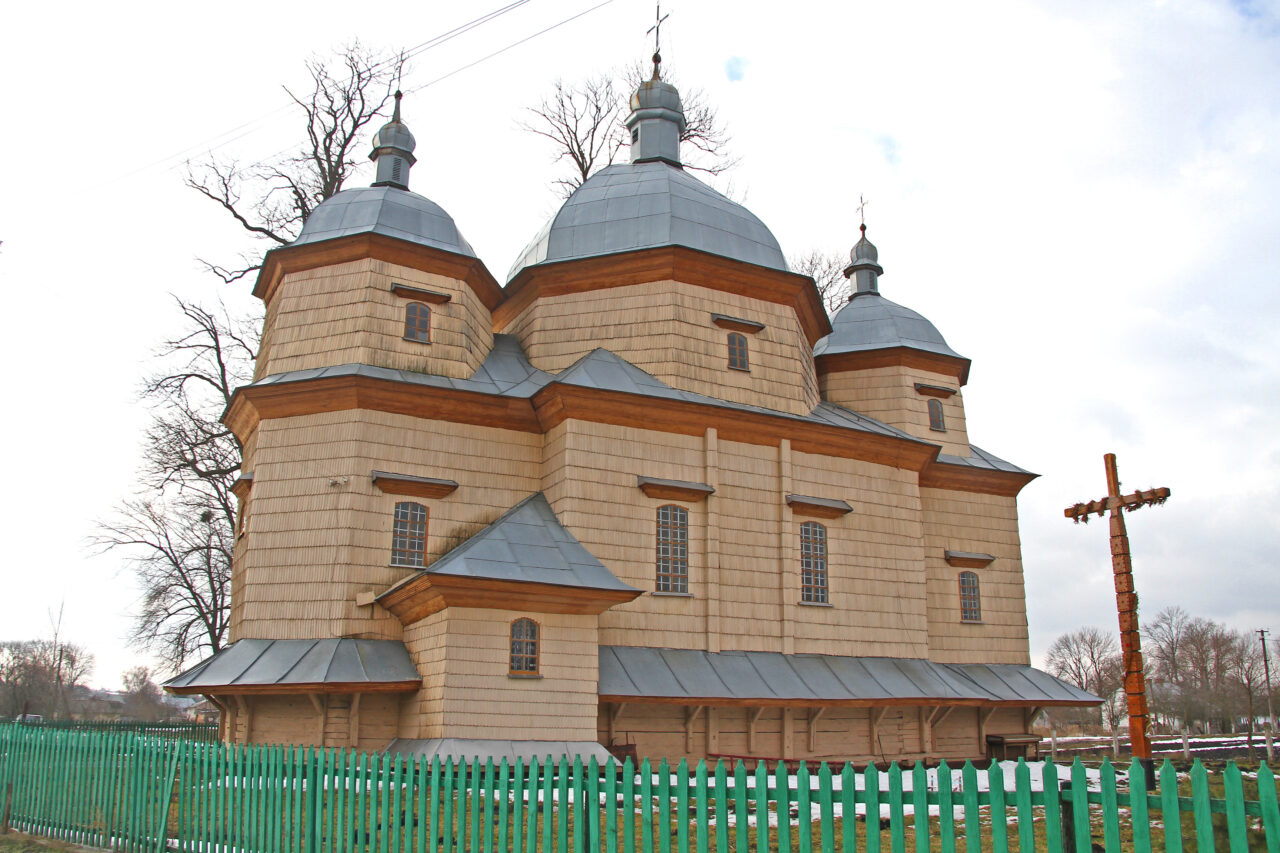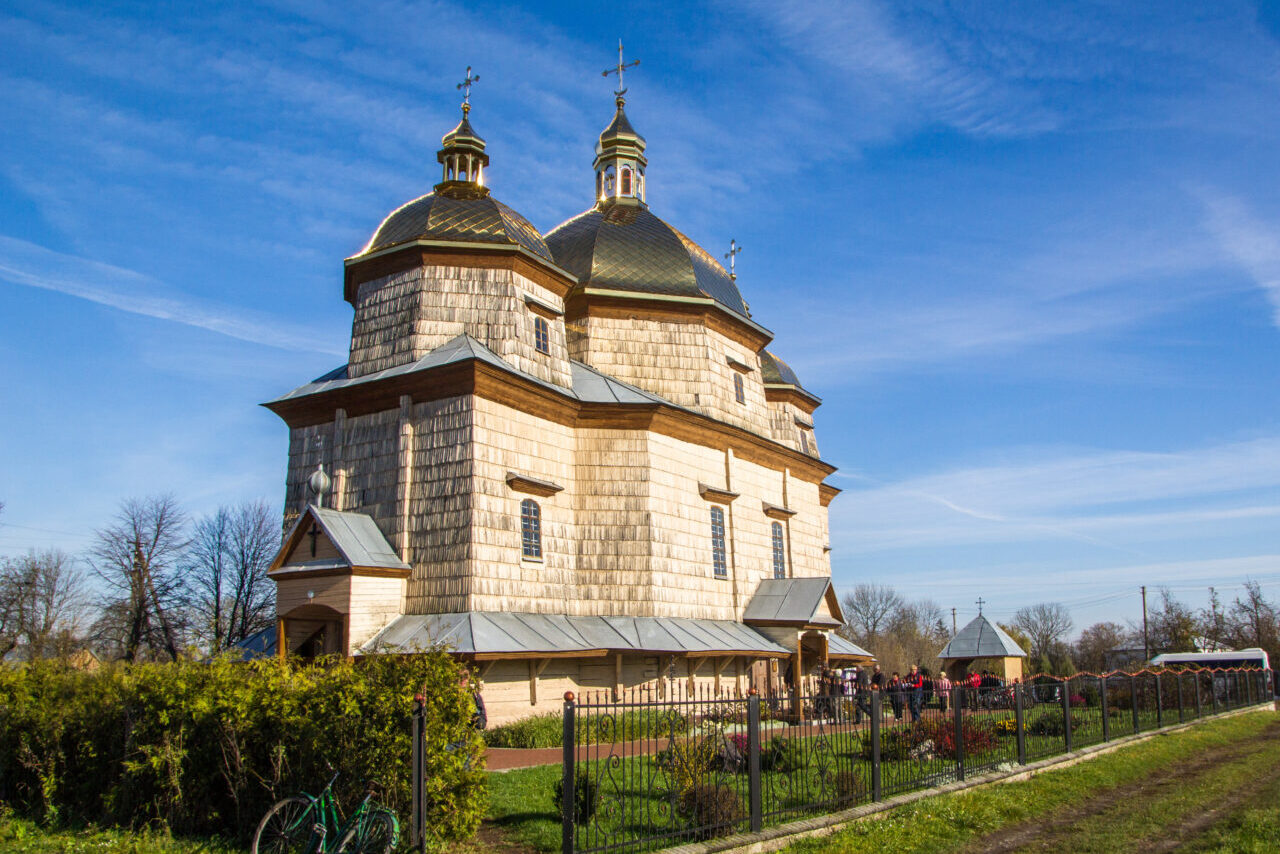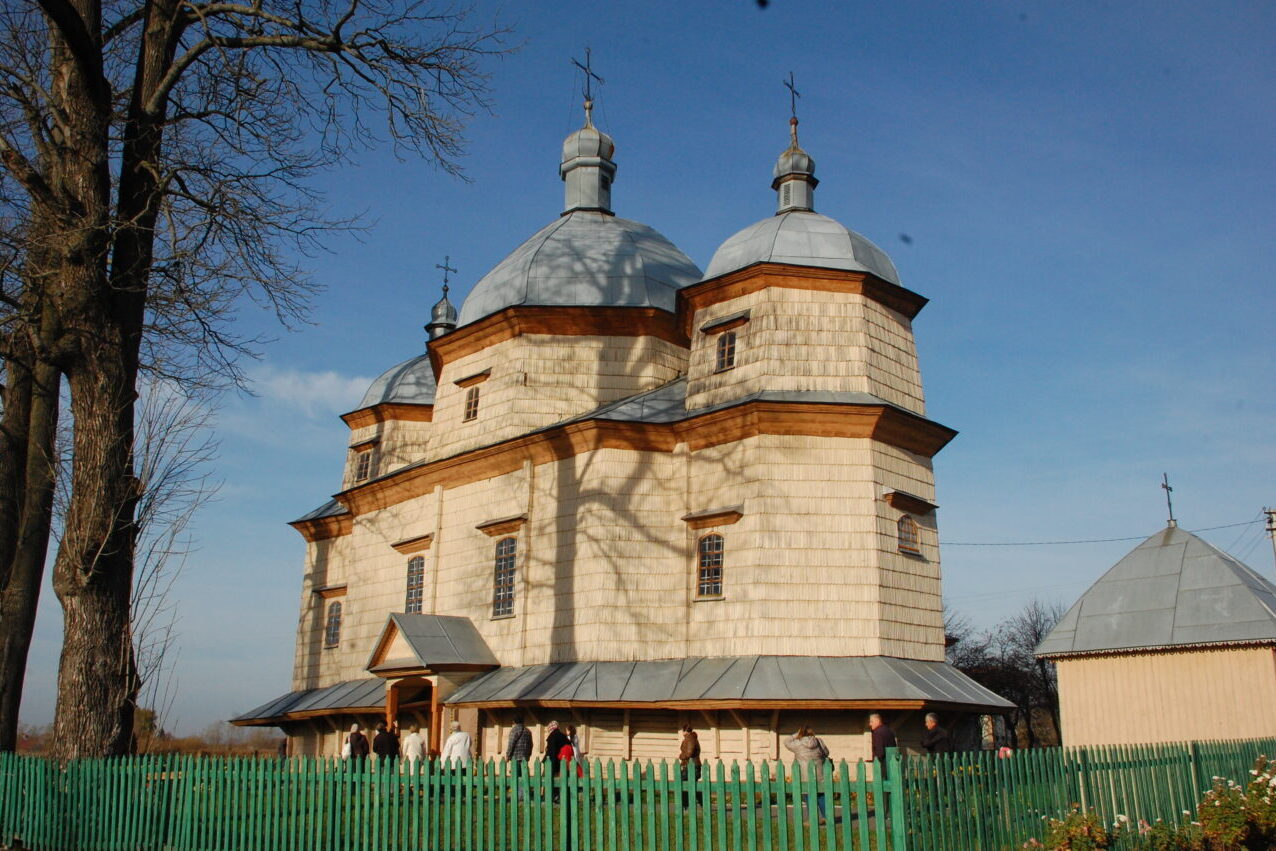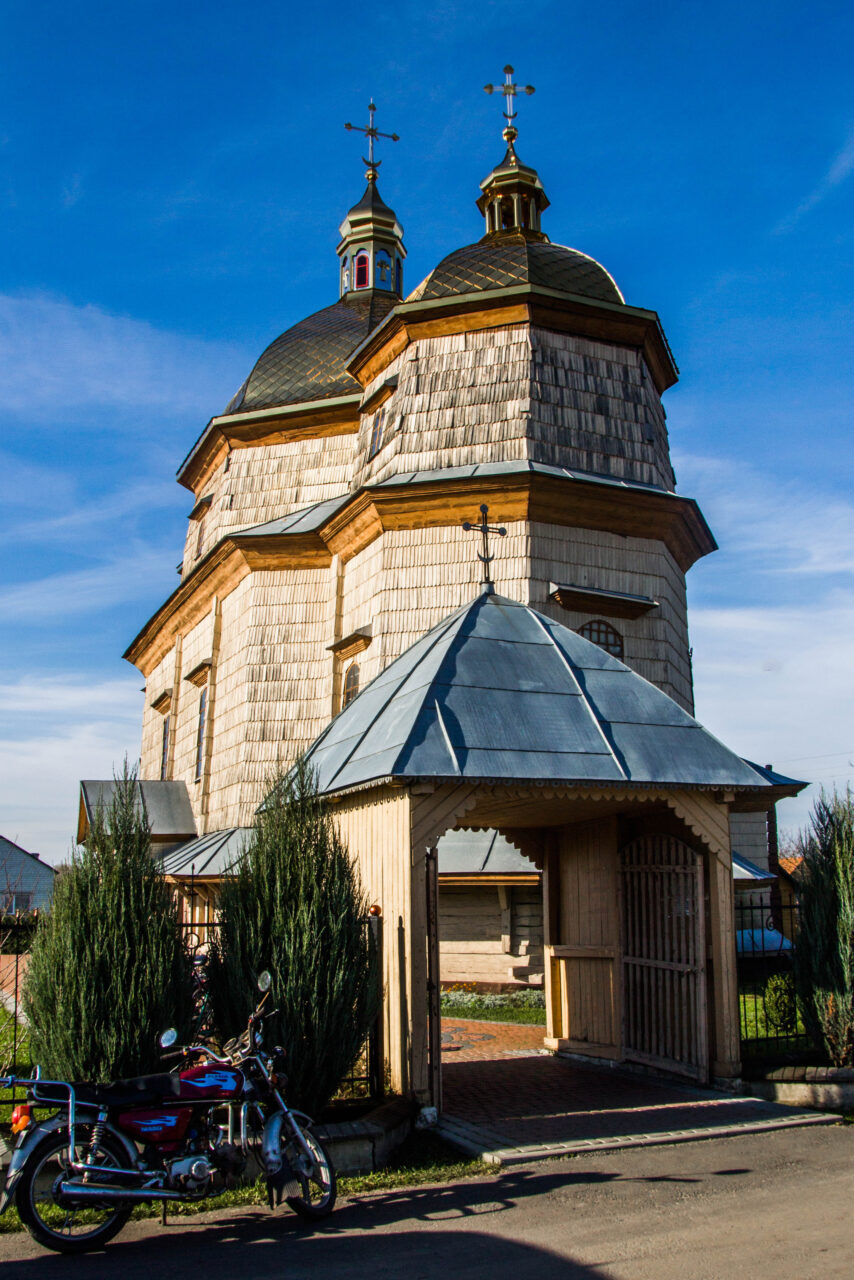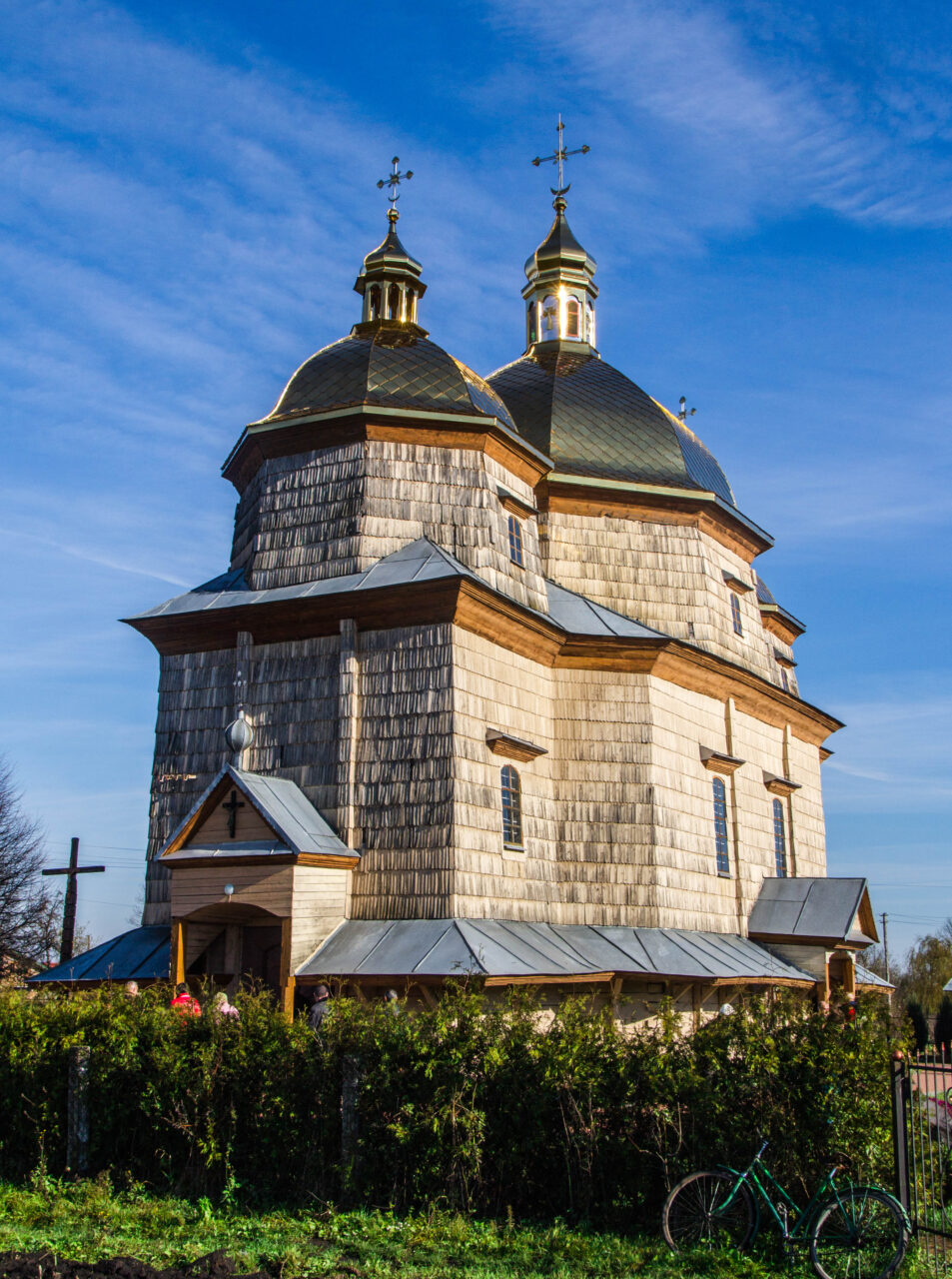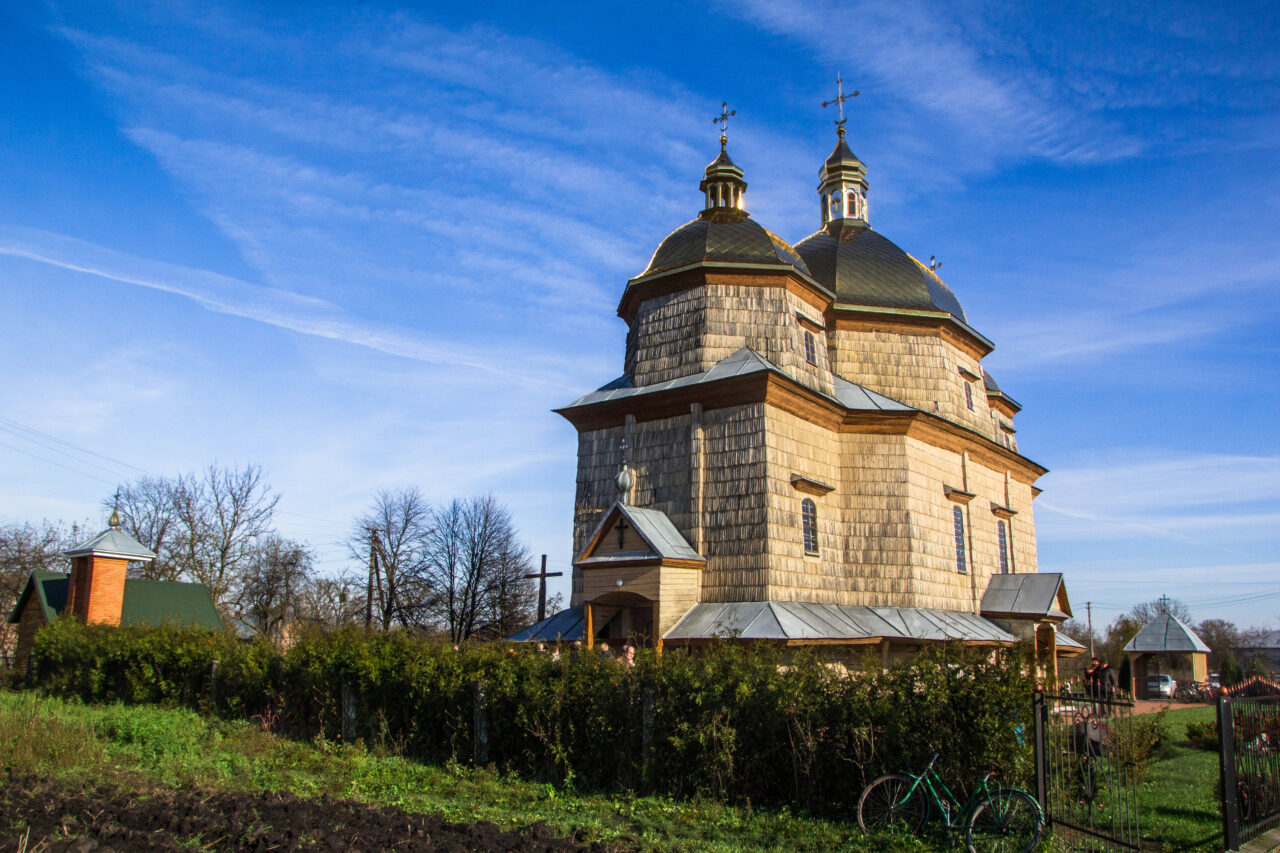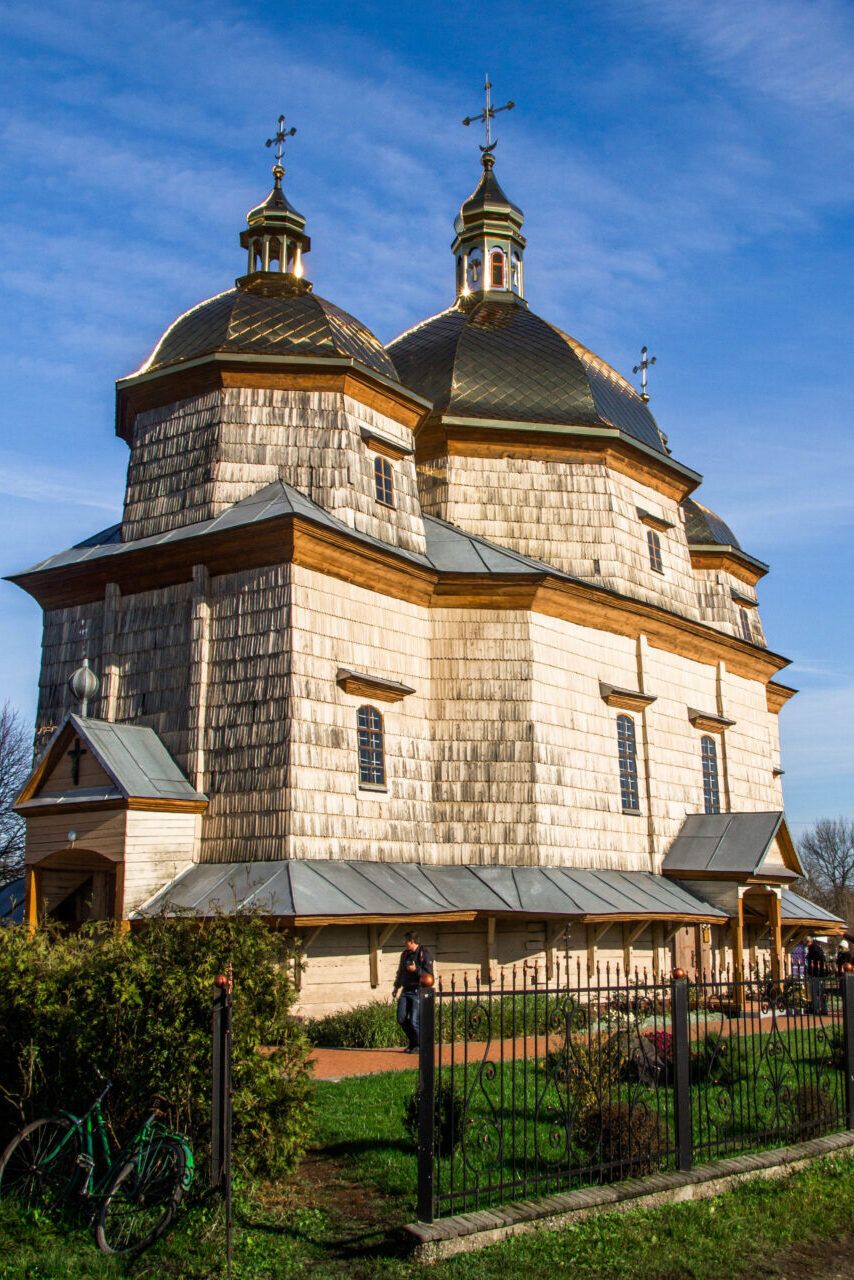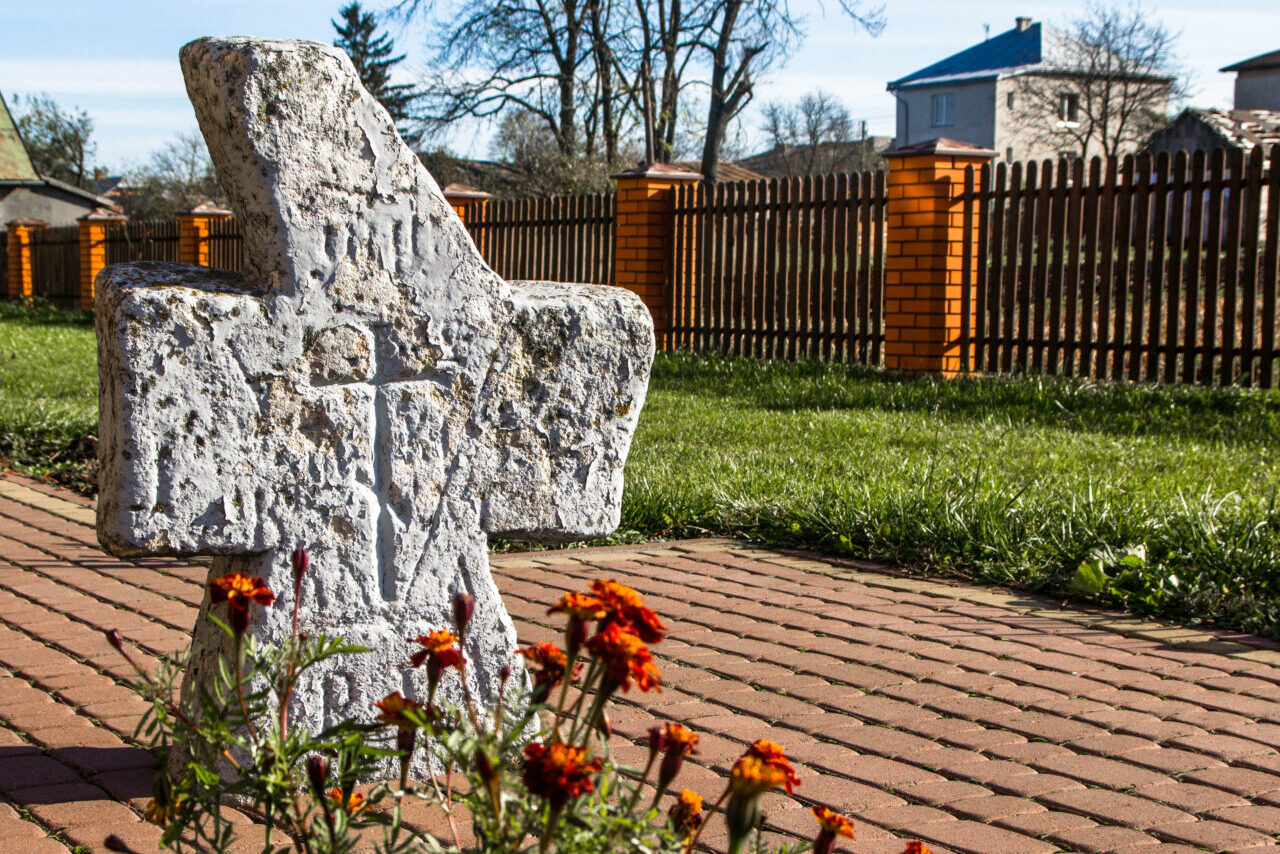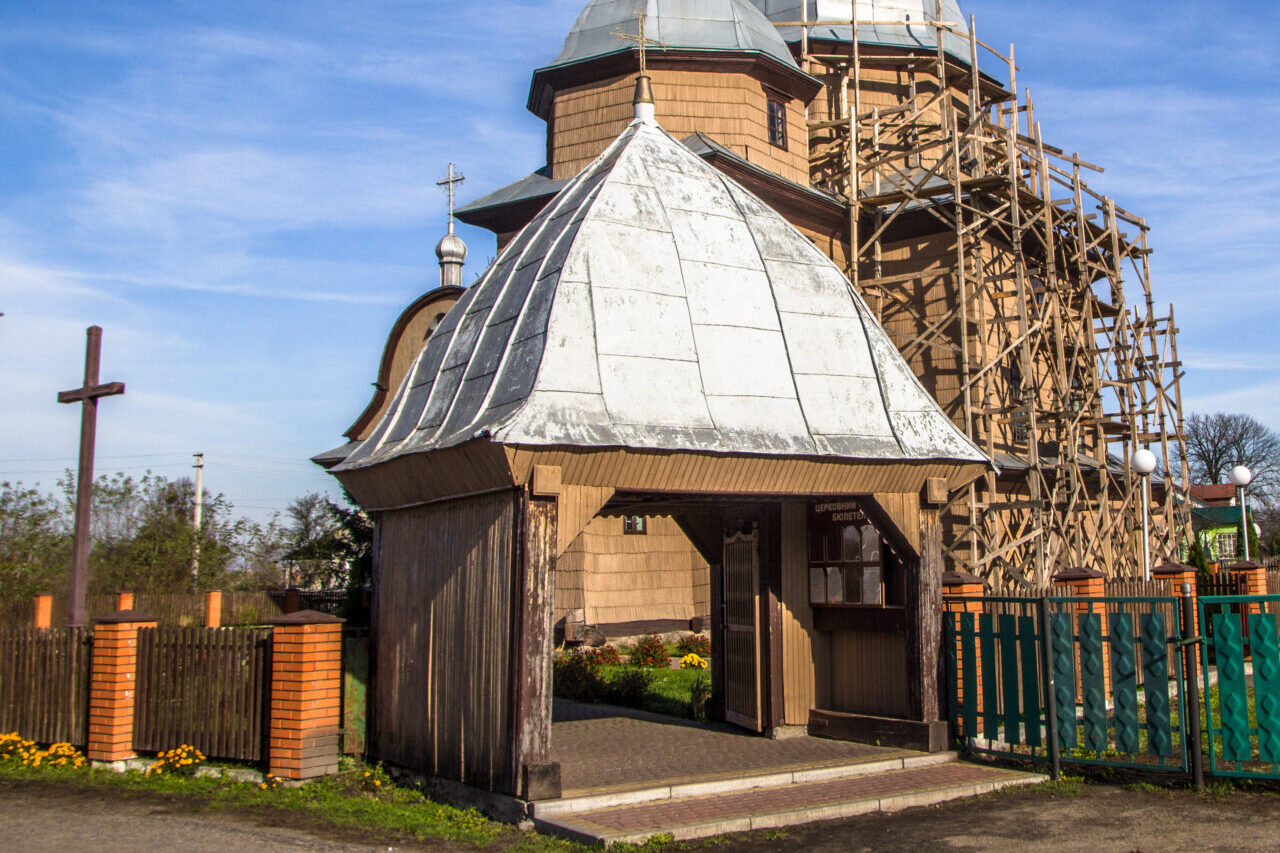Ivan Matsialko’s home village Batiatychi, standing on the once tumultuous, but now gentle and quiet river Batiuchka lies very close to the city of Kamianka-Buzka, some three kilometers eastwards, and is definitely worth visiting. The large village (about 3 000 inhabitants) also has a minimalistic Neo-Gothic Church of St. Jadwiga, built by the Polish colonizers living here on the borderline of Paperivka and Lipniki in 1903, as well as vivid Soviet mosaics painted on the walls of the village library and two ancient wooden churches.
Both churches look like two of a kind, like sisters. Both are perhaps the best representatives of the Volyn region school of wooden sacred architecture. That concordant three-domed church of the Cathedral of the Blessed Virgin Mary with impressive professional and folk baroque interior paintings was built a while later, in 1778 (according to other data, in 1788). We would like to keep a closer eye out for St. George’s Church of 1759. Nevertheless, not to visit the younger church is a real sin. Therefore, let’s have a look at the church of the Cathedral of the Blessed Virgin Mary standing in the very village center, it would be hard to miss it.
Whether in Podilia, Volhynia or Galicia, our ancestors built their churches on very similar principles. The buildings have always had (have) a little wider lower side and gradually narrowed to the top. For some, this shape may resemble a barrel, but when you stand in front of the Batiatychi church, the associations with a sea liner come to mind. The Cathedral of the Blessed Virgin Mary stands on the same place where the oldest sanctuary of Batiatychi, built in 1564, once stood. In the Soviet period the temple was closed and turned first into a warehouse and then into a village museum of history and local folklore. In 1989, the church was reclaimed by one of the religious communities of Batiatychi.
After getting an eyeful of the bell tower next to the church, you can go to St. George’s Church. It is the farthest of all the village sites, all the way to the eastern outskirts, where you will see the highest domes.
St. George’s Church has three naves and three domes. Being an object of wooden architecture, its size is quite substantial, that is, 22.1×10.9 meters and more than 22 meters high. It stands at the site of its predecessor since 1721. The predecessor had bad luck: it burned down. Therefore, a new church was necessary. The then landlord of the village Konstantin Papari allocated funds for its construction. The family of this Lviv resident and ethnic Greek ruled Batiatychi for 280 years, from 1659. Papari allocated one of the best sites in his estate for the church.
Whoever the master builder of the church was, he knew his business well. He knew their business so well that when a few decades later the construction of the church of the Cathedral of the Blessed Virgin Mary began, the builders were guided by the old St. George’s Church. The inscription on the doorway in the nave on the south has been preserved: This church was built in the year of Our Lord 1759 day 29. Hence, it establishes the date, and if we knew what this “day 29” was, we could celebrate its birthday.
In the days of the last landlord of Batiatychi, Oleksandr Papari, the church stood out among the greenery like an eye candy: surrounded by an orchard on one side and a manor park with exotic trees on another.
Both churches have walls covered with nice scaly shingles. But their roofs have been bound in metal plates for more than a century. Formerly, they weren’t vigorous gold, but grey, noble, lackluster. The penultimate time when the metal roof of St. George’s Church was renewed was in the 1990s. The last time was just recently. Now the impressive monument is dressed up in an awful vulgar titanium nitride, shining like a new penny which cheapens the overall image of the building. Its unfortunate that the countrymen behave like children who fancy too bright colors and don’t appreciate their own heritage.
Mural decoration has been preserved in the interior of the church. Some part of it (in the nave under the choir) dates back to the late 18th century. Another part was painted by artist Teofil Kopystyntsky in the late 19th century (other sources say it was made in 1900 during the thorough repair of the church).
The original bell tower of the church was not preserved, perhaps, it had not been smaller than the one standing near the church of the Cathedral of the Blessed Virgin Mary. Therefore, a new, much smaller bell tower was constructed. The church underwent a major refurbishment in the second half of the 20th century. It was restored by well-known Lviv professionals Ivan Mohytych and Liudmyla Dmytrovych in 1974.
The church functioned until 1947. Then the parish was dissolved and the church building was handed over to the local I. Franko collective farm. The collective farm turned it into a warehouse. The building was listed as an architectural monument only in 1979.
There was a time when on the western, closest to Kamianka-Buzka, outskirts of the village stood a wooden church – surely, Batiatychi is a big village. However, it didn’t survive to our time.

